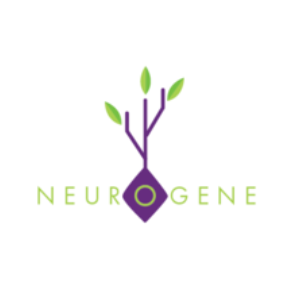FDA approval for the Neurogene gene therapy strategy.
Preclinical studies leading to FDA approval for the Neurogene gene therapy strategy.
Introduction and background.
Members of the Rett community were excited to learn that Neurogene received approval in January 2023 from the US Food and Drug Administration (FDA) to perform a Phase 1/2 clinical trial in paediatric patients with Rett Syndrome. This allows the company to examine the safety and efficacy of gene replacement therapy by their product, named NGN-401. This is comprised of adeno-associated virus (AAV) that delivers a full-length copy of a functional MeCP2 gene. As FDA approval represents a highly significant step, it is useful to review pre-clinical data that were published recently and contributed to the FDA decision (S. Powers et al; Novel MeCP2 gene therapy is effective in a multicenter study using two mouse models of Rett Syndrome and is safe in non-human primates. Molecular Therapy, July 2023).
Neurogene and other companies have used AAV (in this case AAV type 9) to deliver genes to neurons. It is necessary to use AAV because naked DNA i) is usually destroyed during delivery and ii) entry into any cell type, including neurons, is extremely poor. Although AAV is a small virus that limits the size of the DNA (gene) that can be packaged for delivery, it is currently the preferred vehicle for most applications of gene therapy (D Wang et al, 2019. Adeno-associated virus vector as a platform for gene therapy delivery. Nat Rev Drug Discov 18: 358-378). The packaging limit was overcome by Taysha, another company which has already begun a Phase 1 trial in Rett patients, by using a MeCP2 minigene whereas Neurogene uses a different strategy, discussed below, to overcome packaging limitation.
The MeCP2 gene and strategy used by Neurogene.
It is necessary to remind the reader of the Central Dogma, the fundamental manner in which proteins are expressed in human cells, a process in which the information contained in the DNA (gene) is transferred into messenger RNA (mRNA) then into protein, in this case, MeCP2. (See RSAA website; https://rettaustralia.org.au/blog/progress-towards-a-cure-for-rett-syndrome-by-rna-editing/). The production of mRNA is started by cellular proteins which recognise a region on the gene, termed the promoter; the MeCP2 promoter is large, compromising the ability of the AAV to package the MeCP2 gene. To overcome this, Neurogene previously used a promoter that comprised approx 70% of the full-length promoter but in this study (Powers et al, 2023) reduced this to 50% to ensure that the gene can be effectively packaged by the AAV, without loss of promoter activity.
I have also commented on the strategy used by Taysha to ensure that the level of the MeCP2 protein expressed during gene therapy is controlled to prevent MeCP2 duplication syndrome (https://rettaustralia.org.au/blog/a-game-changer-for-gene-therapy-for-rett-syndrome/). Neurogene uses a similar strategy termed EXACT (expression attenuation via construct tuning) to ensure that the level of MeCP2 protein is similarly controlled, in this case by a synthetic microRNA. Thus, points of difference of the Neurogene gene compared to that of Taysha include a shortened intrinsic promoter, a full length MeCP2 gene and a synthetic microRNA. This is the product (NGN-401) that was used in the pre-clinical studies published by Powers et al, 2023, described below.
Preclinical studies with NGN-401 in MeCP2 mutant mice.
Neonatal mice (mice less than 10 days old) with no functional MeCP2 gene (KO mice) were dosed with NGN-401 by intracerebroventricular (ICV) injection to permit direct delivery of the gene into the brain. This was a dose escalation study in which the mice were followed over a long time period. The untreated mice survived for 68 days, whereas the treated mice showed increased survival times that were related to the initial NGN-401 dose; low and high doses were less effective than mid-range doses and the most effective dose resulted in an increased survival to 225 days, a 3.3-fold increase compared with the untreated (control) animals. The authors claimed that this was the highest ever achieved in Rett model mice. In addition to the increased survival, the treated mice also showed significantly fewer symptoms, namely increased mobility and improved gait, breathing, clasping and general condition. However, despite these improvements, the treatment failed to restore the normal phenotype.
Equally important, there was no evidence of MeCP2 overexpression, as the protein level in the treated KO mice was determined to be 54% relative to the expression in normal mice (WT) treated with NGN-401.
The above studies were performed over a period of approx 18 months in Columbus, Ohio, USA. To confirm and extend these studies, an independent evaluation of NGN-401 therapy was undertaken in Edinburgh, Scotland, not only in KO mice but also in mice with a specific common (T158M) mutation in the Rett gene. A mid-range dose that was effective in the previous US studies was chosen. In this case, the untreated KO mice survived for 87 days while the treated mice survived for 201 days, an increase of 2.3-fold. Although this may appear to be less effective than the US study, vital milestones were achieved, as the mice used were a different strain, housed in different conditions and handled by different staff-all factors which may affect the outcome. Thus, the one common factor, NGN-401, was shown to be similarly effective in these different populations. Like the US study, the treated KO mice also showed improved symptoms, which when measured 60 days after treatment suggested restoration of phenotype-a remarkable achievement, although this was not sustained at 90 days after treatment.
To extend these studies, mice with the T158M mutation were treated with NGN-401, resulting in an increase in survival from 140 days in untreated mice to 280 days in treated mice. Although the T158M mice show fewer symptoms than the KO mice, the treated mice showed reduced symptoms consistent with the prior results in the KO mice, resulting in a phenotype that was close to normal.
It is important to note that mice with specific mutations in the Rett gene eg. the T158M mice, show fewer symptoms than KO mice which are used preferentially because changes in behaviour as a result of gene therapy are more readily recognised. Thus the KO mice have a short life span, similar to boys who have Rett syndrome, that is extended after gene therapy, although the mice survival rate is not relevant to Rett patients, but is readily recognised as one marker of gene therapy.
Preclinical studies in non-human primates.
Studies in non-human primates, in this case normal cynomolgus macaques, are usually required for FDA approval and were performed to assess the safety of NGN-401. This study used 5 animals that were treated with different doses and examined 1, 6, 12 months and 18 months after injection, which was via the intrathecal (IT) route (similar to epidural). This route was chosen because it was thought to represent a potential delivery route in patients, but irrespective of this, the FDA approved delivery via the ICV route.
After IT injection, the study showed that MeCP2 mRNA was widely distributed in all regions of the brain and that the level of MeCP2 protein was similar to that of historical controls, confirming that there was no over-expression that risked the induction of MeCP2 duplication syndrome. Long term analysis (18 months after IT injection) confirmed that there were no abnormalities in body weight and markers of blood chemistry and haematology. Furthermore, there was no evidence of liver toxicity that plagued early studies with AAV, and histopathological examination of a wide range of tissues showed no abnormalities.
Conclusion.
NGN-401 was approved for use in a Phase 1/2 clinical trial, most likely based on data presented to the FDA that was published by Powers et al, 2023. The studies reveal a new design of the MeCP2 gene (DNA) that is delivered by the AAV, direct delivery into the brain and extensive dose ranging experiments. The studies in mice and macaques were performed over a period of 18 months to prove efficacy and safety, key findings necessary for FDA approval. We may feel that progress is slow, but long-term studies such as these are necessary. Careful progress will ensure that there are no surprising adverse events that have the potential to set the field back by several years.
Eric Gowans
August, 2023

